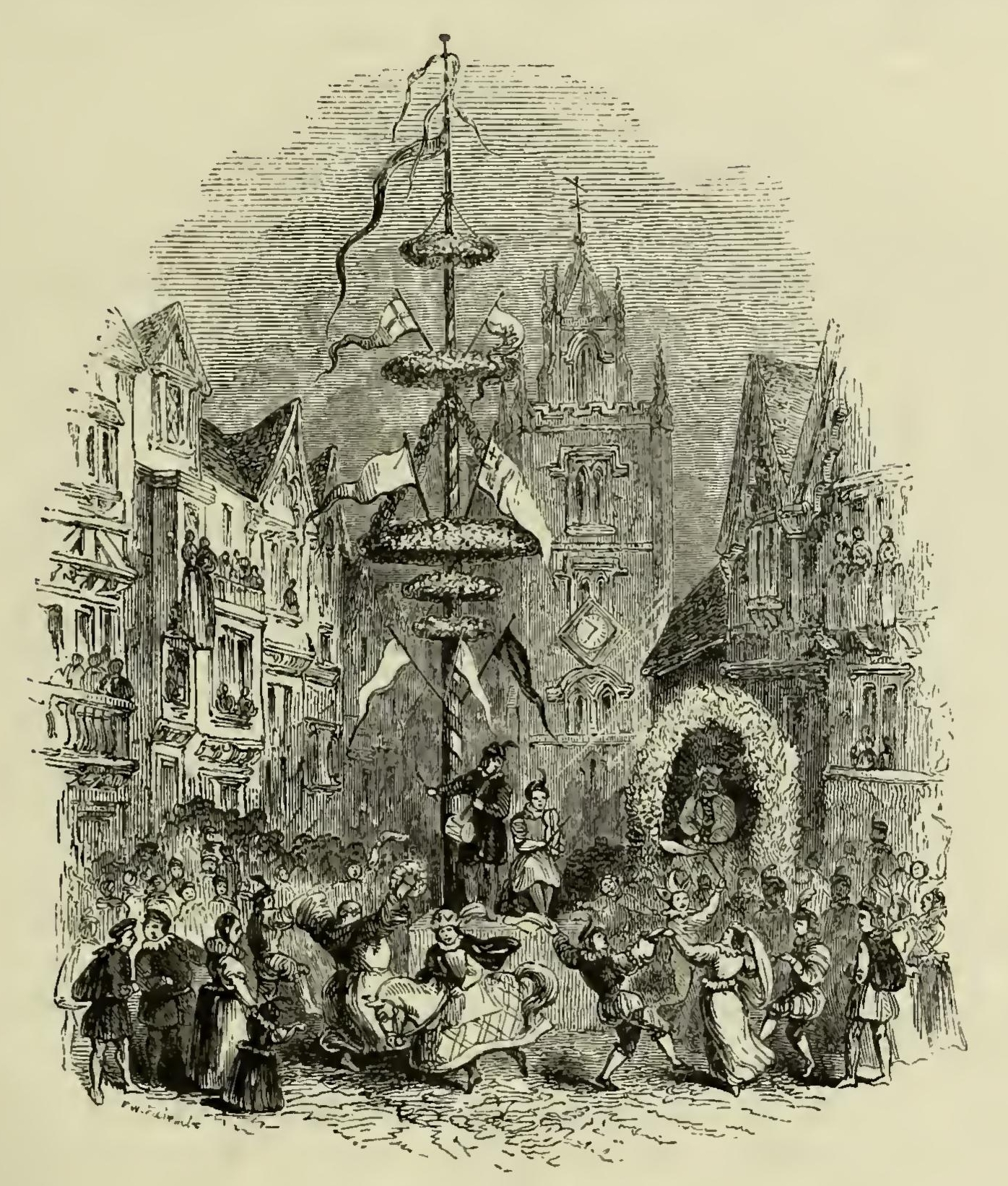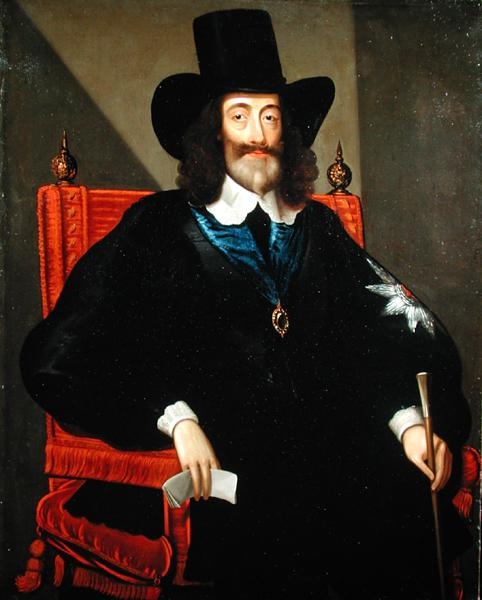|
Samuel Vassall
Samuel Vassall (1586–1667) was an English merchant, politician, and slave trader who sat in the House of Commons from 1640 to 1648. Vassall was the majority shareholder of the Guinea Company, founded in 1651. Samuel Vassall was 77 when he left London for Carolina in 1663. He died in the America colonies in 1667. Early life Vassall was the second son of John Vassall and his second wife, Anna Russell, and was baptised at Stepney on 5 June 1586. His father was a Huguenot refugee who travelled to England from Normandy before August 1572. At his own expense, John Vassall fitted out two ships, ''The Samuel'' and the ''Little Toby,'' which he commanded against the Spanish Armada and later invested in the Virginia Company. Samuel Vassall lived for a time at Cockethurst Farmhouse, in what was then, Prittlewell, Essex, at the start of the 1600s. The house remained in the Vassall family until 1808. Merchant and slave-trading career Vassall launched his career as a merchant for the Le ... [...More Info...] [...Related Items...] OR: [Wikipedia] [Google] [Baidu] |
William Vassall
English colonist William Vassall (1592–1656) is remembered both for promoting religious freedom in New England and commencing his family's ownership of slave plantations in the Caribbean. A patentee of the Massachusetts Bay Company, Vassall was among the merchants who petitioned Puritan courts for greater civil liberties and religious tolerance. In 1647, he and John Child published ''New-England’s Jonas cast up in London'', a tract describing the efforts of colonial petitioners. By early 1648, Vassall moved to Barbados to establish a slave-labor sugar plantation. He and his descendants were among the Caribbean's leading planters, enslaving more than 3,865 people before Britain abolished slavery in 1833. Family William Vassall’s paternal grandfather, Huguenot Jean Vassall, sent his son John to England from the family’s native Normandy when religious dissension arose. A man of “great wealth,”Power, “Vassalls at Belle House Neck'',” p. 30. John Vassall (1548–1625) ... [...More Info...] [...Related Items...] OR: [Wikipedia] [Google] [Baidu] |
Thomas Soame
Sir Thomas Soame (1584 – 1 January 1671) was an English politician who sat in the House of Commons from 1640 to 1648. Life Soame was the son of Sir Stephen Soame and his wife Anne Stone daughter of William Stone, haberdasher of London and his wife Mercy Gray daughter of John Gray of Barley, Hertfordshire. His father was Lord Mayor of London. He was baptised at St.Mary Colechurch in London on 4 February 1584. Soame was alderman of Farringdon Without ward from 28 July 1635 to 29 January 1639 and in 1635 became Sheriff of London. He was Merchant Commissioner of the East India Company from 1640 to 1643. In April 1640, Soame was elected Member of Parliament for City of London in the Short Parliament. He was imprisoned in the Tower of London in May 1640 with three other aldermen - Nicholas Rainton, John Gayre and Thomas Atkins - for refusing to list the inhabitants of his ward who were able to contribute £50 or more to a loan for King Charles. He was re-elected in MP for ... [...More Info...] [...Related Items...] OR: [Wikipedia] [Google] [Baidu] |
Personal Rule
The Personal Rule (also known as the Eleven Years' Tyranny) was a period in the history of England from the dissolution of the third Parliament of Charles I in 1629 to the summoning of the Short Parliament in 1640, during which the King refused to call the next parliament and ruled as an autocratic absolute monarch without recourse to Parliament. Charles claimed that he was entitled to do this under the royal prerogative and that he had a divine right. Charles had called three Parliaments by the third year of his reign in 1628. After the murder of George Villiers, Duke of Buckingham, who was deemed to have a negative influence on Charles' foreign policy, Parliament began to criticize the king more harshly than before. Charles then realised that, as long as he could avoid war, he could rule without the need of Parliament. Names Whig historians such as S. R. Gardiner called this period the "Eleven Years' Tyranny", because they interpret Charles's actions as highly authoritar ... [...More Info...] [...Related Items...] OR: [Wikipedia] [Google] [Baidu] |
St Andrew Undershaft
St Andrew Undershaft is a Church of England church (building), church in the City of London, the historic nucleus and modern financial centre of London. It is located on St Mary Axe, within the Aldgate ward, and is a rare example of a City church that survived both the Great Fire of London and the Blitz. The present building was constructed in 1532 but a church has existed on the site since the 12th century. Today, St Andrew Undershaft is administered from the nearby St Helen's Bishopsgate church. History The first church on the site, which today is bordered by St Mary Axe and Leadenhall Street, was built in Middle Ages, medieval times, being recorded in 1147. It was rebuilt in the 14th century and again in 1532; this third incarnation of the building survives today. It is in the Perpendicular style with its entrance located at the base of its off-centre tower. The interior is divided into six bays, with many of the original fittings that survived the Victorian period, Victoria ... [...More Info...] [...Related Items...] OR: [Wikipedia] [Google] [Baidu] |
Pride's Purge
Pride's Purge is the name commonly given to an event that took place on 6 December 1648, when soldiers prevented members of Parliament considered hostile to the New Model Army from entering the House of Commons of England. Despite defeat in the First English Civil War, Charles I of England, Charles I retained significant political power. This allowed him to create an alliance with Scots Covenanters and Roundhead, Parliamentarian moderates to restore him to the English throne. The result was the 1648 Second English Civil War, in which he was defeated once again. Convinced only his removal could end the conflict, senior commanders of the New Model Army took control of London on 5 December. The next day, soldiers commanded by Colonel Thomas Pride forcibly excluded from the Long Parliament those MPs viewed as their opponents, and arrested 45. The purge cleared the way for the Execution of Charles I, execution of Charles in January 1649, and establishment of the The Protectorate, Pro ... [...More Info...] [...Related Items...] OR: [Wikipedia] [Google] [Baidu] |
Long Parliament
The Long Parliament was an Parliament of England, English Parliament which lasted from 1640 until 1660, making it the longest-lasting Parliament in English and British history. It followed the fiasco of the Short Parliament, which had convened for only three weeks during the spring of 1640 after an Personal Rule, 11-year parliamentary absence. In September 1640, Charles I of England, King Charles I issued writs summoning a parliament to convene on 3 November 1640.This article uses the Julian calendar with the start of year adjusted to 1 January – for a more detailed explanation, see Old Style and New Style dates#Differences between the start of the year, old style and new style dates: differences between the start of the year. He intended it to pass financial bills, a step made necessary by the costs of the Bishops' Wars against Kingdom of Scotland, Scotland. The Long Parliament received its name from the fact that, by Act of Parliament, it stipulated it could be dissolved only ... [...More Info...] [...Related Items...] OR: [Wikipedia] [Google] [Baidu] |
Short Parliament
The Short Parliament was a Parliament of England that was summoned by King Charles I of England on 20 February 1640 and sat from 13 April to 5 May 1640. It was so called because of its short session of only three weeks. After 11 years of personal rule between 1629 and 1640, and on the advice of the Earl of Strafford, Charles recalled Parliament to obtain money to finance his military struggle with Scotland in the Bishops' Wars. However, like its predecessors, the new parliament had more interest in redressing grievances than in voting the King funds for his war against the Scottish Covenanters. John Pym, MP for Tavistock, quickly emerged as a major figure in debate; his long speech on 17 April expressed the refusal of the House of Commons to vote subsidies unless royal abuses were addressed. John Hampden, in contrast, was persuasive in private: he sat on nine committees. A flood of petitions concerning royal abuses were coming up to Parliament from the country. Charles's ... [...More Info...] [...Related Items...] OR: [Wikipedia] [Google] [Baidu] |
City Of London (UK Parliament Constituency)
The City of London was a United Kingdom Parliament of the United Kingdom, parliamentary constituency. It was a United Kingdom constituencies, constituency of the British House of Commons, House of Commons of the Parliament of England then of the Parliament of Great Britain from 1707 to 1800 and of the Parliament of the United Kingdom from 1801 to 1950. Boundaries and boundary changes This borough constituency (or 'parliamentary borough/burgh') consisted of the City of London, which is at the very centre of Greater London. The only change by the Parliamentary Boundaries Act 1832 was to include Temple, London, The Temple. Bounded south by the Thames, the City adjoins City of Westminster, Westminster westward, enfranchised in 1545.[The House of Commons 1509–1558, by S.T. Bindoff (Secker & Warburg 1982)] In other directions a web of tiny liberties and parishes of diverse size adjoined from medieval times until the 20th century. Most of the population of Middlesex was beyond the c ... [...More Info...] [...Related Items...] OR: [Wikipedia] [Google] [Baidu] |
Planter Class
The planter class was a Racial hierarchy, racial and socioeconomic class which emerged in the Americas during European colonization of the Americas, European colonization in the early modern period. Members of the class, most of whom were settlers of European descent, consisted of individuals who owned or were financially connected to plantations, large-scale farms devoted to the production of cash crops in high demand across Euro-American markets. These plantations were operated by the forced labor of Slavery, enslaved people and indentured servants and typically existed in subtropical, tropical climates, tropical, and somewhat more temperate climates, where the soil was fertile enough to handle the intensity of plantation agriculture. Cash crops produced on plantations owned by the planter class included tobacco, sugarcane, cotton, Indigofera, indigo, coffee, tea, Cocoa bean, cocoa, sisal, Vegetable oil, oil seeds, Elaeis, oil palms, hemp, Hevea brasiliensis, rubber trees, and f ... [...More Info...] [...Related Items...] OR: [Wikipedia] [Google] [Baidu] |
Tobacco
Tobacco is the common name of several plants in the genus '' Nicotiana'' of the family Solanaceae, and the general term for any product prepared from the cured leaves of these plants. More than 70 species of tobacco are known, but the chief commercial crop is ''N. tabacum''. The more potent variant ''N. rustica'' is also used in some countries. Dried tobacco leaves are mainly used for smoking in cigarettes and cigars, as well as pipes and shishas. They can also be consumed as snuff, chewing tobacco, dipping tobacco, and snus. Tobacco contains the highly addictive stimulant alkaloid nicotine as well as harmala alkaloids. Tobacco use is a cause or risk factor for many deadly diseases, especially those affecting the heart, liver, and lungs, as well as many cancers. In 2008, the World Health Organization named tobacco use as the world's single greatest preventable cause of death. Etymology The English word 'tobacco' originates from the Spanish word ''taba ... [...More Info...] [...Related Items...] OR: [Wikipedia] [Google] [Baidu] |







